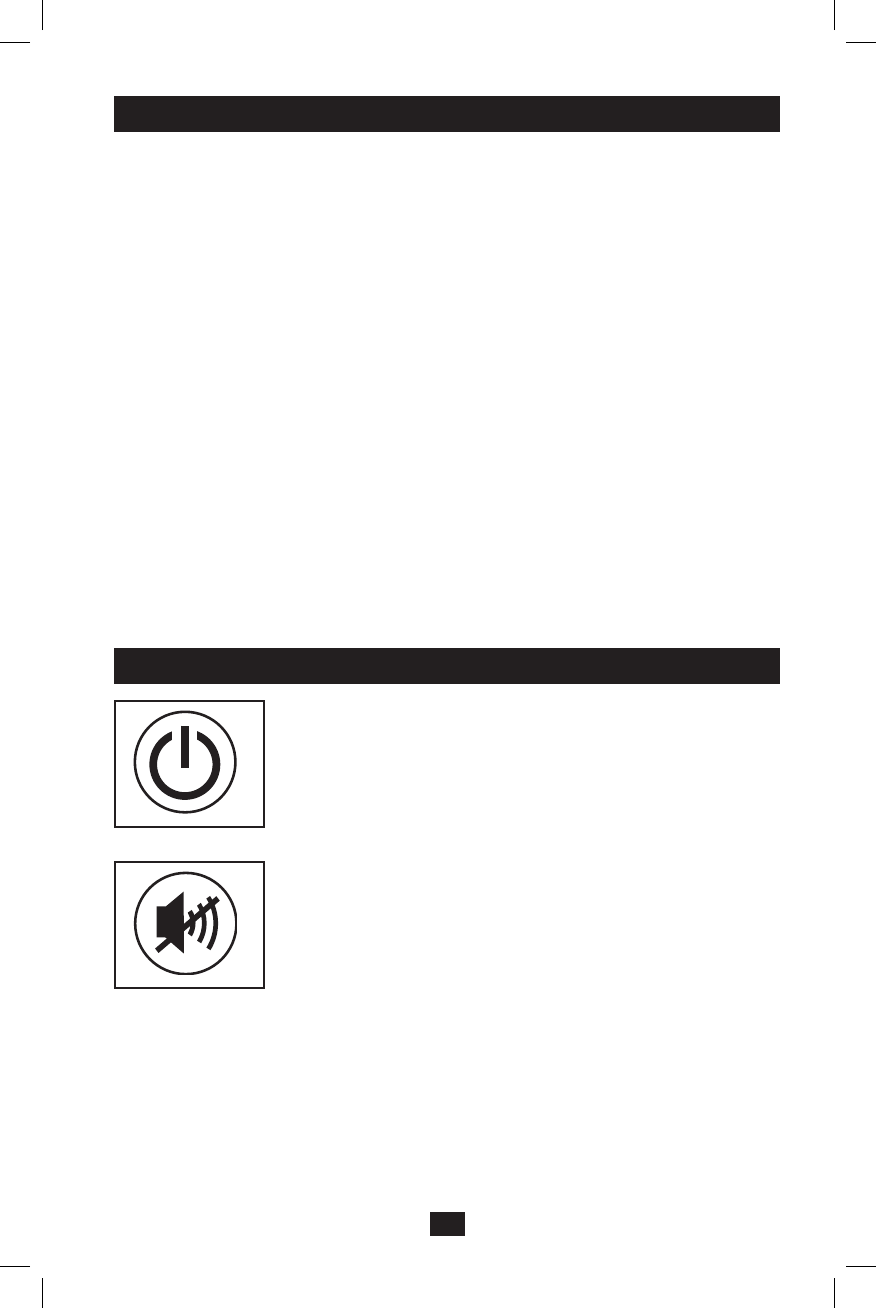
3
STEP1:PlacetheUPSineitherahorizontal(“desktop”)orvertical(“tower”)position.
The UPS's housing is designed with sides that slope slightly in order to tilt the LCD Display up for
easy viewing in either position—horizontal or vertical. As another aid to easy viewing, the LCD
Display can be rotated. To rotate the display: carefully insert a small tool in the slots on the sides of
the display to pop it out of the UPS housing; rotate the display, and snap it back into the UPS housing.
CAUTION:TosafelybalancetheUPSwhenitisplacedinavertical(“tower”)position,make
suretheLCDDisplayislocatedatthetopofthefrontpanel.
STEP2:PlugtheUPSintoanoutlet.
After plugging the UPS into a wall outlet, push the ON/OFF button for one second to turn the UPS on
(see Basic Operation section). Note: The UPS will not turn on automatically in the presence of live
utility power.
STEP3:PlugyourequipmentintotheUPS.
Select outlets (see diagram) will provide battery backup and surge protection; plug your computer,
monitor and other critical devices here.* Select outlets (see diagram) will provide surge protection
only; plug your printer and other nonessential devices here.
* Your UPS is designed to support electronic equipment only. You will overload the UPS if the total wattage ratings
for all the equipment you connect to the Battery Backup Protected/Surge Protected outlets exceeds the UPS’s Output
Capacity. To find your equipment’s wattage ratings, look on their nameplates. If the equipment is listed in amps,
multiply the number of amps by 120 to determine watts. (Example: 1 amp × 120 = 120W). If you are unsure if you
have overloaded the Battery Backup Protected/Surge Protected outlets, run a self-test (see “MUTE/TEST” Button
description).
CAUTION:TheUPSmustbepluggedintoaliveACoutletandturnedonfor24hoursafter
initialinstallationtofullychargetheUPS'sinternalbattery.Yourconnectedequipmentwill
receiveutility-suppliedACpower(ifpresent)immediatelyaftertheUPSispluggedinand
turnedon;however,yourconnectedequipmentmaynotreceivefullbatterybackupintheevent
ofablackoutorseverebrownoutuntiltheUPS'sinternalbatteryisfullycharged.
Quick Installation
Basic Operation (Front Panel)
“ON/OFF”Button
• ToTurntheUPSON: Press and hold the ON/OFF button for one
second.* If utility power is absent, pressing the button will “cold-start”
the UPS, i.e. turn it on and supply power from its battery.**
• ToTurntheUPSOFF: Press and hold the ON/OFF button for one
second.* The UPS will be turned completely off (deactivated).
* The alarm will beep once briefly after one second has passed. ** Runtime will be
proportionate to the UPS battery's level of charge.
“MUTE/TEST”Button
• ToSilence(or“Mute”)UPSAlarms: Briefly press and release the
MUTE/TEST button. Note: Continuous alarms (warning you to shut
down connected equipment immediately) cannot be silenced.
• ToRunaSelf-Test: With your UPS plugged in and turned on, press and
hold the MUTE/TEST button for two seconds. Continue holding the
button until the alarm beeps several times and the UPS performs a self-
test. See “Results of a Self-Test” below. Note: You can leave connected
equipment on during a self-test.
CAUTION!DonotunplugyourUPStotestitsbattery.Thiswillremovesafeelectrical
groundingandmayintroduceadamagingsurgeintoyournetworkconnections.
ResultsofaSelf-Test:The test will last approximately 10 seconds as the UPS switches to battery to
test its load capacity and charge. All LCD Display icons will be illuminated and the UPS alarm will
sound.
ON/OFFButton
MUTE/TESTButton
201011078 93-3003.indd 3 11/12/2010 1:57:19 PM
